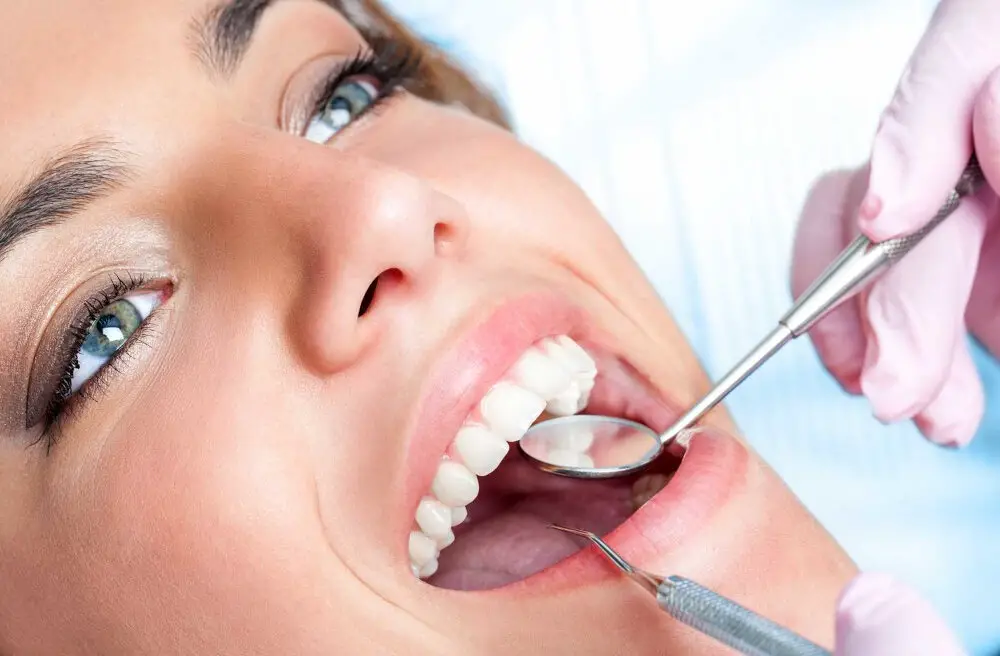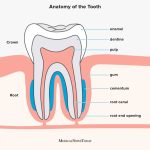Removing Wisdom Teeth Gauze: A Guide to Safe and Timely Recovery

Extracting wisdom teeth is a common dental procedure that many people undergo to alleviate pain, infection, and other dental issues. Following the surgery, the dentist places gauze over the extraction site to control bleeding and promote clotting. This gauze must be removed at a certain time to avoid complications and ensure a safe and timely recovery. However, many people struggle with the removal process and may accidentally disrupt the healing process. This guide aims to provide tips and recommendations on how to remove wisdom teeth gauze safely and efficiently to promote a speedy and successful recovery. One of the crucial factors in post-operative recovery is proper wound management. The removal of wisdom teeth gauze plays a significant role in this process. The removal of gauze should be done with care and precision to avoid any damage to the extraction site or surrounding areas. Additionally, the removal should not be done too early, as this may result in excess bleeding and discomfort. Conversely, removing the gauze too late may lead to the formation of a dry socket, which can be incredibly painful. This guide will provide insights into the appropriate time to remove the gauze and the best techniques to do so safely and effectively.
Wisdom teeth extraction is a surgical procedure to remove one or more of the four permanent adult teeth located at the back of the mouth. These teeth usually appear between the ages of 17 and 25. Due to a lack of space in the mouth, they can cause problems such as pain, infections, or damage to other teeth. After the procedure, the dentist or oral surgeon will place gauze over the extraction site to stop bleeding and promote blood clotting. The use of gauze is essential for preventing dry socket, a painful condition that occurs when the blood clot is dislodged before the wound has healed. Patients are advised to change the gauze every 30-45 minutes until the bleeding stops, and to avoid rinsing or spitting for the first 24 hours after surgery.
Aftercare instructions are crucial for ensuring a safe and timely recovery after removing wisdom teeth. These instructions are typically provided by a dentist or oral surgeon and may include recommendations for pain management, diet, and oral hygiene. Following these instructions can prevent complications such as infection, bleeding, and dry socket, which can prolong the recovery process. It is important to adhere to the recommended timeline for removing gauze after wisdom teeth extraction and to avoid certain activities that can disrupt the healing process. By following aftercare instructions, patients can ensure a smooth recovery and return to their normal activities as soon as possible.
When to Remove Gauze

When it comes to removing gauze after wisdom teeth removal, timing is crucial for a safe and successful recovery. Generally, gauze is placed on the extraction site to control bleeding and promote blood clot formation. The length of time you should keep the gauze in place depends on the extent of the surgery and the amount of bleeding. Typically, you should leave the gauze in place for at least 30 minutes after surgery, applying firm pressure to the area. After the initial 30 minutes, you can gently remove the gauze and discard it. It’s important to note that you should never leave gauze in your mouth for an extended period as it can cause irritation, infection, or even blockage of the airway. Additionally, if you experience persistent bleeding after removing the gauze, you should contact your dentist or oral surgeon immediately. In some cases, they may recommend replacing the gauze or applying additional pressure to the area. By following the proper protocol for removing gauze, you can ensure a safe and speedy recovery from wisdom teeth removal.
When it comes to removing gauze after wisdom teeth extraction, it is crucial to follow the dentist’s instructions. Typically, it is safe to remove the gauze after 30-45 minutes post-surgery. However, this time frame may vary depending on the extent of the extraction and the individual’s healing process. The gauze works to control bleeding, and removing it too early may result in excessive bleeding, while leaving it in for too long can lead to dry sockets. Therefore, it’s essential to monitor the amount of bleeding and change the gauze as necessary. In any case, it’s always safe to consult with your dentist if you have any concerns about removing the gauze after wisdom teeth extraction.
After undergoing wisdom teeth extraction, the gauze placed over the surgical site is essential to control bleeding and facilitate clot formation. However, it is crucial to remove the gauze at the right time to avoid complications and promote healing. Some of the signs that indicate it’s time to remove the gauze include a decrease in bleeding and the formation of a stable blood clot, which can be observed by the presence of a yellowish-white film on the gauze. Additionally, the gauze may feel saturated and start to slip out of the mouth, indicating that it has served its purpose. It is important to follow the dentist’s instructions carefully and remove the gauze gently to avoid disturbing the clot and causing bleeding.
How to Remove Gauze

Removing gauze after a surgical procedure can be a daunting experience, especially when it comes to wisdom teeth extraction. However, removing gauze is a crucial step in the post-operative recovery process. The gauze helps to control bleeding from the surgical site and prevent the formation of blood clots. Therefore, it is essential to remove the gauze properly to avoid any complications. The first step is to ensure that your hands are clean and dry before touching the gauze. You can use sterile gloves if necessary. Then, gently open your mouth to expose the gauze, and use your fingers to grasp the gauze at the corner. Slowly and carefully remove the gauze from your mouth, making sure not to disturb the surgical site. Avoid pulling the gauze out quickly, as this can cause bleeding. After removing the gauze, it is essential to dispose of it immediately. You can wrap the gauze in tissue paper or a plastic bag and discard it. It is also crucial to continue with the aftercare instructions provided by your dentist or oral surgeon. This includes avoiding hot and spicy foods, smoking, and drinking through a straw. You should also continue to rinse your mouth with warm saltwater as instructed. Remember to handle the gauze removal process with care and patience to avoid any complications such as bleeding or infection. By following these steps, you can ensure a safe and timely recovery after wisdom teeth extraction.
Proper removal of gauze is crucial for a safe and timely recovery after wisdom teeth extraction. To begin, ensure that your hands are clean and sterile. Gently open your mouth and locate the gauze, taking care not to dislodge any blood clots that have formed. Slowly and steadily remove the gauze, pulling it out in the direction of the tongue. If the gauze feels stuck or uncomfortable, wet it with water or saline solution to soften it before removal. Once the gauze is fully removed, dispose of it immediately and rinse your mouth gently with warm salt water. Remember to avoid using straws and smoking during recovery to prevent complications. By following these simple steps, you can ensure a safe and successful recovery after wisdom teeth extraction.
Removing gauze after wisdom teeth removal can be a daunting task, and it is essential to handle it with care to avoid any complications. One of the most common mistakes people make is removing the gauze too early, leading to excessive bleeding. Additionally, removing the gauze forcefully can also damage the clot formed at the extraction site, leading to dry socket and prolonged healing time. It is crucial to follow the dentist’s instructions and change the gauze as recommended to prevent any infection or irritation. Moreover, avoid spitting, rinsing, or drinking hot liquids, as it can also dislodge the clot and cause bleeding. Lastly, be gentle when removing the gauze to avoid any discomfort and ensure a smooth recovery.
After Removing Gauze

After removing gauze from the site of wisdom teeth removal, it is important to follow proper aftercare instructions to ensure a safe and timely recovery. The first step is to gently rinse your mouth with warm salt water to help reduce swelling and prevent infection. It is recommended to rinse your mouth every few hours for the first 24 hours after gauze removal. Avoid using mouthwash during this time, as it can irritate the sensitive area and delay healing. It is also important to continue taking any prescribed pain medication and to avoid strenuous activity for the first few days after gauze removal. Eating soft foods and avoiding hard, crunchy, or spicy foods can also help prevent irritation to the surgical site. Additionally, it is important to avoid smoking or using tobacco products, as they can increase the risk of infection and delay healing. By following these aftercare instructions, you can help ensure a safe and successful recovery after removing wisdom teeth gauze.
After the gauze has been removed following wisdom teeth extraction, it is normal to experience some bleeding and discomfort in the affected area. The amount of bleeding will vary from person to person, but it should gradually decrease over time. It is important to avoid touching the area with your tongue or fingers, and to avoid drinking through a straw as this can dislodge the blood clot and cause further bleeding. It is also important to stick to soft foods and avoid hard or crunchy foods that may irritate the area. Keeping the mouth clean by gently rinsing with saltwater is recommended, but it is important to avoid vigorous rinsing or spitting as this can also dislodge the blood clot. With proper care, the discomfort and bleeding should gradually subside over the next few days.
Managing bleeding and pain after removing wisdom teeth can be a challenging task. First and foremost, it’s important to follow the instructions provided by your dentist or surgeon. Generally, you should bite down on gauze for several hours after the surgery to control bleeding. However, if the bleeding persists, you can try biting down on a moist teabag, which contains tannic acid that can help constrict blood vessels. As for pain, you can take over-the-counter pain relievers such as ibuprofen or acetaminophen as directed by your dentist. Applying an ice pack to the affected area for 20 minutes at a time can also help reduce pain, swelling, and bruising. Additionally, avoiding smoking, drinking through a straw, or spitting can prevent further irritation or dislodging of the blood clot, which is crucial for proper healing.
During the recovery phase after removing wisdom teeth, it is important to avoid certain foods and drinks that may cause irritation or damage to the sensitive and healing surgical area. Hard, crunchy, or sticky foods such as popcorn, chips, nuts, and candy should be avoided as they can dislodge the blood clot that forms in the socket and result in dry socket, a painful condition that can delay healing. Carbonated drinks, alcohol, and hot beverages such as coffee and tea should also be avoided as they can cause swelling, bleeding, or infection. Instead, opt for soft, nutrient-rich foods such as soups, smoothies, mashed potatoes, and scrambled eggs, and drink plenty of water to stay hydrated and promote healing.
Followup Care

After removing wisdom teeth, follow-up care is crucial to ensure a safe and speedy recovery. Following the procedure, the dentist or oral surgeon will provide instructions on how to care for the surgical site. It is essential to follow these instructions carefully to avoid complications such as infection, dry socket, or excessive bleeding. Patients should take the prescribed pain medication and antibiotics as directed. They should avoid consuming hard or crunchy foods for several days and stick to a soft, easy-to-chew diet. Rinsing the mouth with warm saltwater can promote healing and reduce inflammation. It is crucial to avoid smoking, drinking alcohol, or using a straw, as these can lead to dry socket. Additionally, patients should rest for a few days after the procedure and avoid any strenuous activities. Ice packs can be applied to the face to reduce swelling and discomfort. Patients should also keep their head elevated while sleeping to reduce swelling. It is normal to experience some pain and swelling after removing wisdom teeth, but if the pain or swelling becomes severe, it is important to contact the dentist or oral surgeon immediately. Overall, following the post-operative care instructions carefully and taking it easy for a few days can help ensure a safe and speedy recovery after removing wisdom teeth.
Attending follow-up appointments is crucial for ensuring a safe and timely recovery after wisdom teeth removal. These appointments allow your dentist or oral surgeon to monitor your healing progress and assess any potential complications that may arise. By attending these appointments, you can receive valuable advice on how to care for your wounds, learn about any necessary dietary restrictions, and receive instructions on when to resume normal activities. Neglecting follow-up appointments can lead to delayed healing, infection, and other complications that could have been prevented with proper monitoring. Therefore, it is important to prioritize attending all follow-up appointments to ensure a smooth recovery process.
Follow-up appointments after wisdom teeth removal are crucial for ensuring a safe and timely recovery. During these appointments, the dentist or oral surgeon will examine the surgical site to ensure proper healing and check for any signs of infection or complications. They may also remove any remaining stitches or perform a cleaning to remove any debris or food particles that may have accumulated. The dentist will also provide instructions on how to continue caring for the surgical site at home and may recommend additional pain management techniques if necessary. It is important to attend all follow-up appointments to ensure that any potential issues are addressed promptly and to ensure a successful recovery.
There are several signs of complications that may arise after removing wisdom teeth, including severe pain, bleeding, swelling, fever, difficulty breathing or swallowing, and the presence of pus or discharge. These complications could be indicative of an infection, nerve damage, or other issues that require immediate medical attention. Patients should keep a careful eye on their recovery progress and contact their dentist or oral surgeon if any of these symptoms persist or worsen. Promptly seeking medical attention can help prevent further complications and ensure a safe and successful recovery.
In conclusion, removing wisdom teeth can be a daunting experience, but with proper care and attention, the recovery process can be smooth and comfortable. It’s crucial to follow the dentist’s post-surgery instructions, such as changing the gauze regularly and avoiding certain foods and activities. The healing process may take some time, but it’s vital to be patient and not rush it. It’s also essential to pay attention to any signs of complications, such as excessive bleeding or infection, and contact the dentist immediately if any issues arise. Remember to take care of yourself during this time, rest as much as possible, and follow a healthy diet to aid in the healing process.
Following aftercare instructions is crucial for safe and timely recovery after a wisdom teeth removal procedure. These instructions are designed to minimize the risk of complications and promote healing. Ignoring or failing to follow aftercare instructions can lead to prolonged discomfort, delayed healing, and even infection. It is essential to keep the surgical site clean, avoid certain foods and activities, and take any prescribed medications as directed. Patients should also attend all follow-up appointments to ensure proper healing and address any concerns. By following aftercare instructions, patients can ensure a smooth recovery and get back to their normal routine as soon as possible.
Conclusion

In conclusion, removing wisdom teeth can be a daunting process, but it is necessary for good oral health. Proper aftercare is crucial for a safe and timely recovery. One of the important steps in the aftercare process is removing the gauze properly. Patients should follow the guidance of their oral surgeon or dentist and avoid any actions that could disrupt the healing process. With patience, diligence, and proper care, patients can recover comfortably and quickly after wisdom teeth removal. It is essential to stay informed and take the necessary steps to ensure a smooth recovery to avoid any complications.







